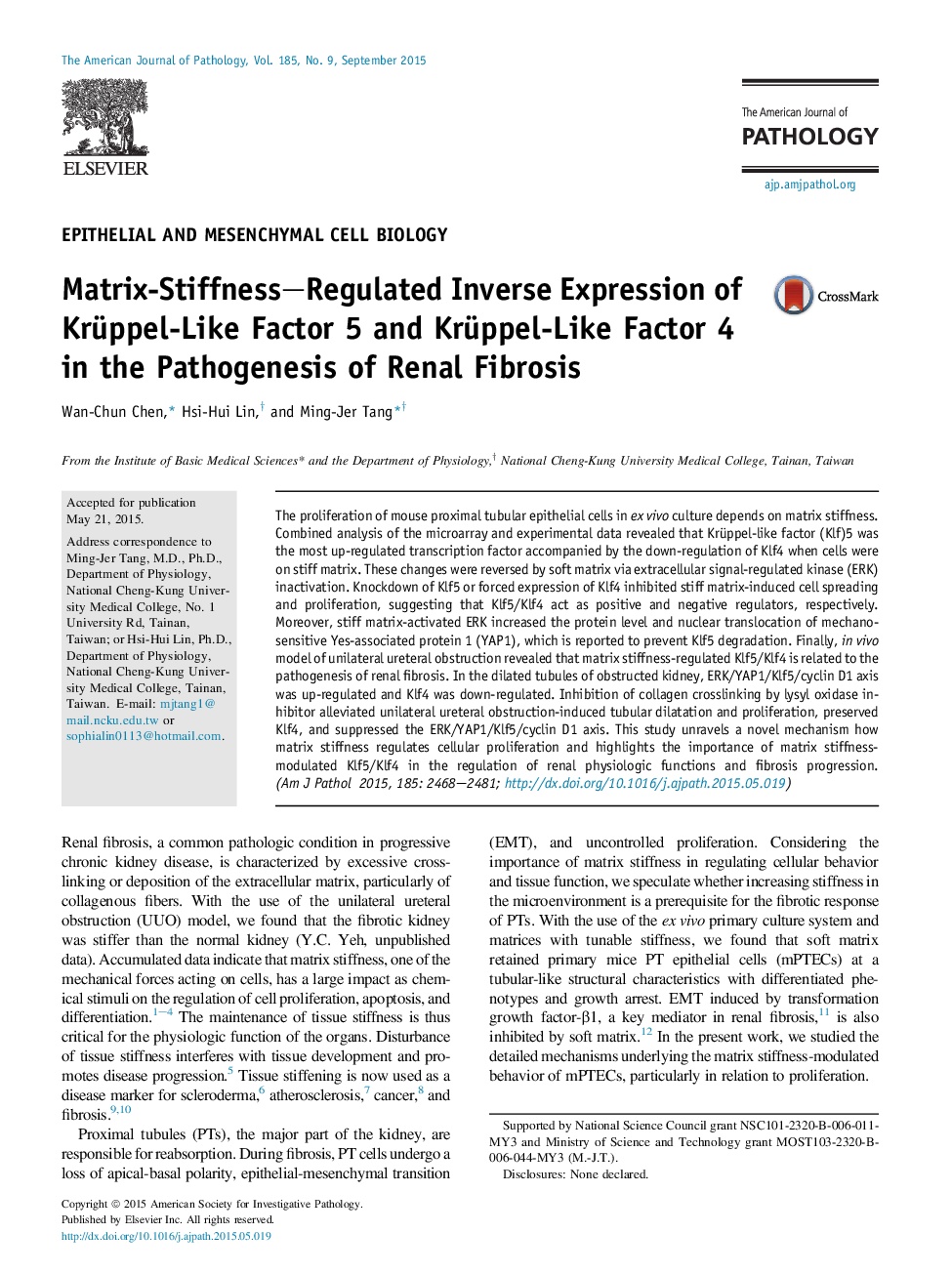| کد مقاله | کد نشریه | سال انتشار | مقاله انگلیسی | نسخه تمام متن |
|---|---|---|---|---|
| 2865879 | 1573376 | 2015 | 14 صفحه PDF | دانلود رایگان |

The proliferation of mouse proximal tubular epithelial cells in ex vivo culture depends on matrix stiffness. Combined analysis of the microarray and experimental data revealed that Krüppel-like factor (Klf)5 was the most up-regulated transcription factor accompanied by the down-regulation of Klf4 when cells were on stiff matrix. These changes were reversed by soft matrix via extracellular signal-regulated kinase (ERK) inactivation. Knockdown of Klf5 or forced expression of Klf4 inhibited stiff matrix-induced cell spreading and proliferation, suggesting that Klf5/Klf4 act as positive and negative regulators, respectively. Moreover, stiff matrix-activated ERK increased the protein level and nuclear translocation of mechanosensitive Yes-associated protein 1 (YAP1), which is reported to prevent Klf5 degradation. Finally, in vivo model of unilateral ureteral obstruction revealed that matrix stiffness-regulated Klf5/Klf4 is related to the pathogenesis of renal fibrosis. In the dilated tubules of obstructed kidney, ERK/YAP1/Klf5/cyclin D1 axis was up-regulated and Klf4 was down-regulated. Inhibition of collagen crosslinking by lysyl oxidase inhibitor alleviated unilateral ureteral obstruction-induced tubular dilatation and proliferation, preserved Klf4, and suppressed the ERK/YAP1/Klf5/cyclin D1 axis. This study unravels a novel mechanism how matrix stiffness regulates cellular proliferation and highlights the importance of matrix stiffness-modulated Klf5/Klf4 in the regulation of renal physiologic functions and fibrosis progression.
Journal: The American Journal of Pathology - Volume 185, Issue 9, September 2015, Pages 2468–2481